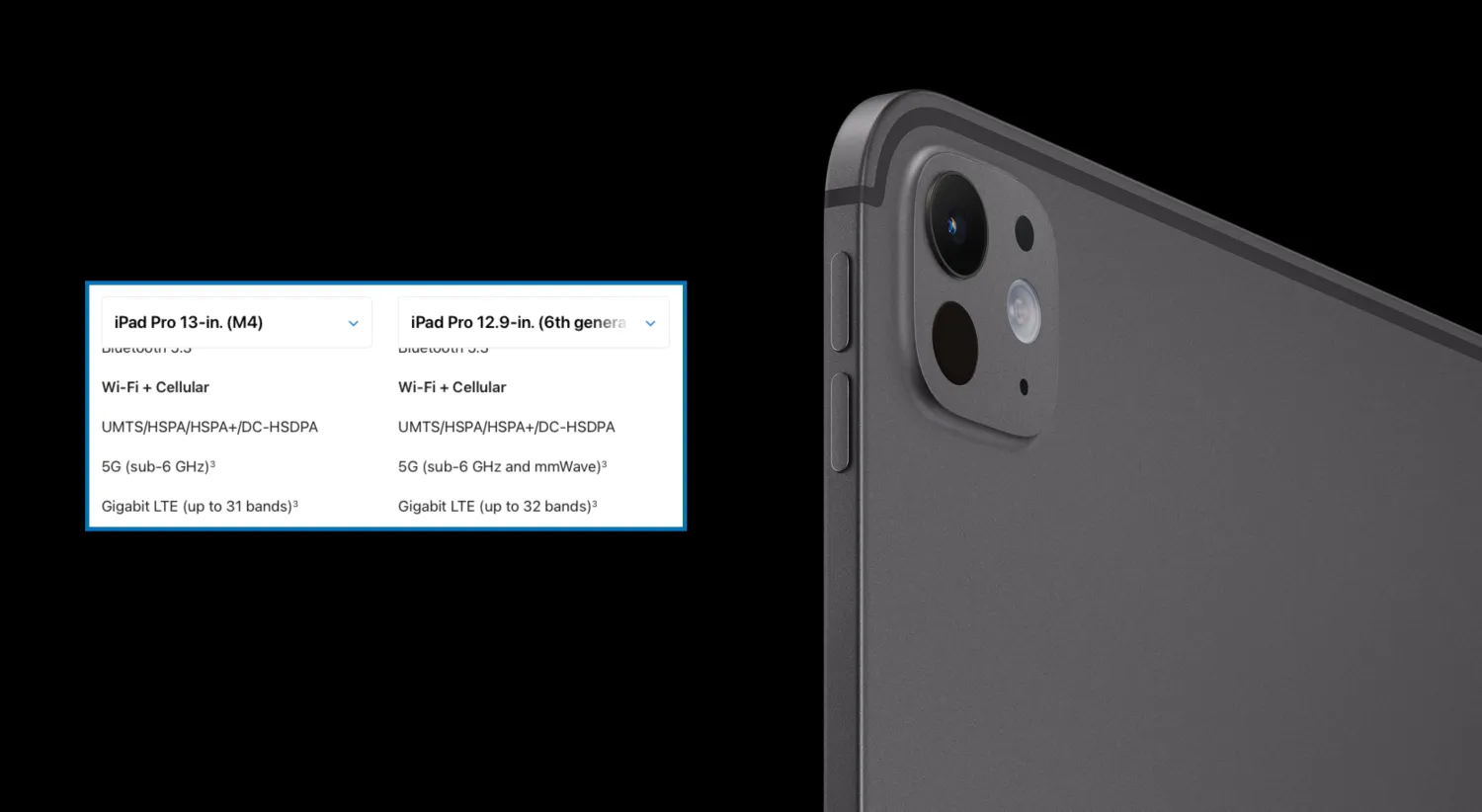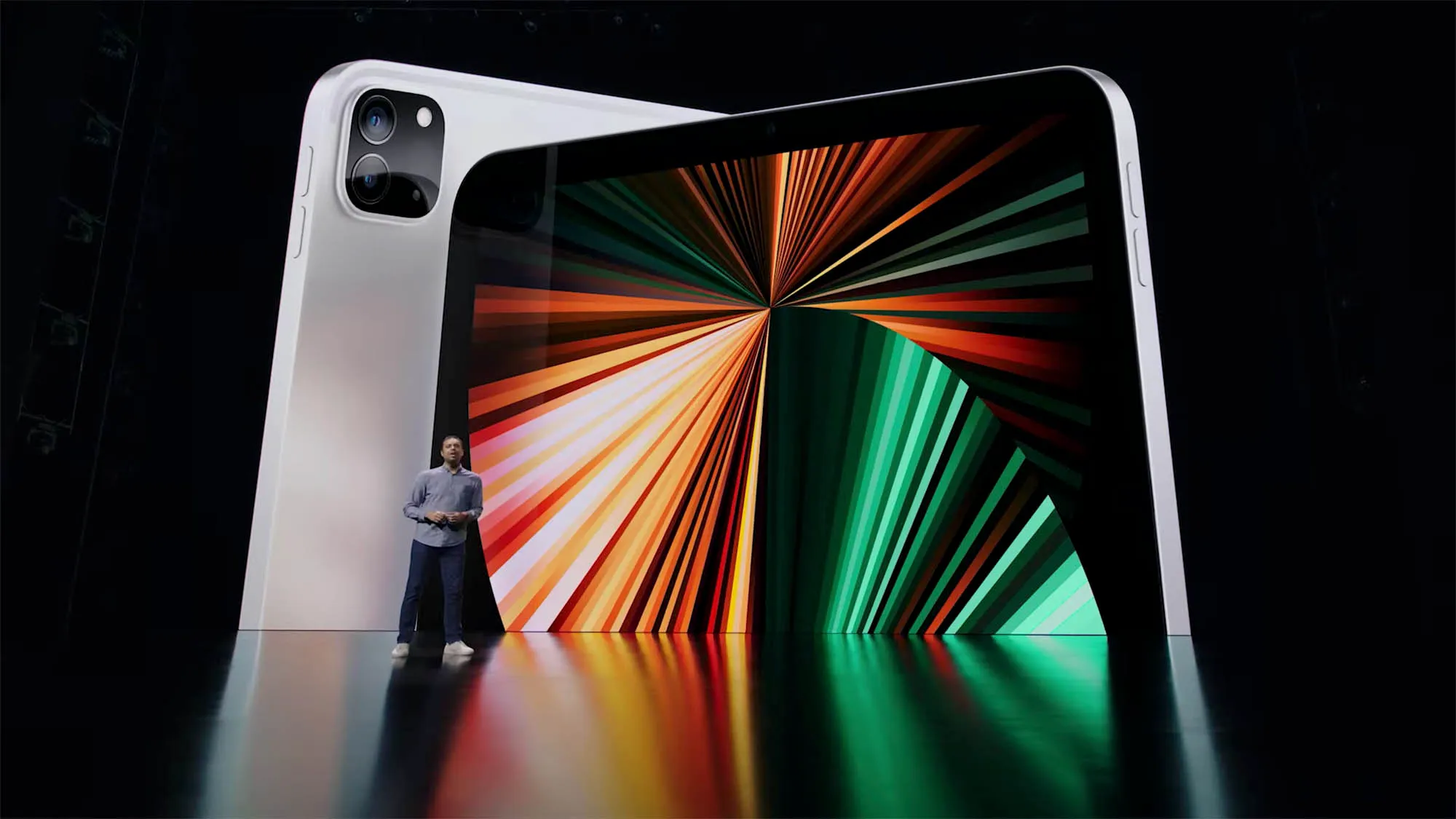Highlights
- iPhone 16 Pro projected to reach a maximum brightness of 1,200 nits, surpassing its predecessor.
- Both iPhone 16 Pro and iPad Pro expected to peak at 1,600 nits for HDR content.
- iPad Pro drops 5G mmWave support, limiting to sub-6 GHz spectrum.
- iPhone 16 Pro’s increased normal brightness could redefine daily user experience.
A recent report indicates that the iPhone 16 Pro may surpass the M4 iPad Pro in a crucial area, even though it may not have the tablet’s dual OLED screen.
Apple claims that the iPad Pro has the most advanced display in the world, but the iPhone 16 Pro may refute that statement.
According to the leak, when using the iPhone 16 Pro normally or displaying SDR content, the screen would reach a maximum brightness of 1,200 nits.
Compared to the maximum brightness of 1,000 nits on the iPhone 15 Pro, this would represent a 20% gain. This implies that when used casually, Apple’s next phones will become brighter than the current models.

To put things in perspective, the recently revealed iPad Pro can withstand 1,000 nits of average brightness.
According to rumors, the iPhone 16 Pro would maintain a maximum brightness of 1,600 nits, making it identical as the iPad Pro and iPhone 15 Pro.
One could argue that normal max brightness is more important than peak HDR brightness because the majority of material people consume is in SDR.
One could argue that normal max brightness is more important than peak HDR brightness because the majority of material people consume is in SDR.
When the iPhone 16 Pro is released in a few months, Apple’s claim that the iPad Pro’s screen is the “world’s most advanced display” will be nullified.

According to the reliable Sonny Dickson on X a few days ago, it’s the iPhone 16 Pro Max which is going to be the grip-stretcher, thanks to its biggest-ever screen size, 6.9 inches, a noticeable increase from the current iPhone 15 Pro Max’s 6.7 inches.”
“Apple is ramping up its work on foldable devices, according to a new investor note seen by 9to5Mac. The report, from Haitong International Securities analyst Jeff Pu, says that Apple will begin mass production of a 20.3-inch foldable device in late 2025, followed by a foldable iPhone in late 2026.
“If today’s report from Pu is to be believed, Apple has “accelerated” its work on foldable devices. The report says that there is “increasing visibility” of Apple’s foldable devices based on supply chain checks.
mmWave Support Cancelled on iPad Pro

As well as losing an ultra-wide camera, the new iPad Pro has also dropped support for 5G mmWave.
As per the iPad Pro specs page, the M4 iPad Pro supports 5G cellular on sub-6 GHz spectrum only, and LTE on 31 bands. The older cellular iPad Pro could do mmWave and supported one additional LTE band.
First introduced to Apple’s ecosystem with iPhone 12, millimeter wave enables super high wireless speeds and ultra low latency cellular communication. However, the tradeoff is that the signal can only be carried over shorter distances and often cannot penetrate glass or trees, so it’s usually unavailable indoors.
As a result, carriers have not used it very often. Verizon is leading the way in mmWave deployment in the US, with 1-2 gigabit speeds available to users in certain locations.
Moreover, mmWave is helpful in densely populated places like stadiums. Sub-6 GHz is, nevertheless, the frequency used for the most bulk of 5G coverage in the US.
The situation with mmWave availability outside of the US is considerably more dire; in fact, mmWave radios are completely absent from iPhones sold outside of the US.
It appears that Apple has decided it is no longer worthwhile to include mmWave on iPads, US or otherwise, due to the absence of carrier support. Without a doubt, indoor settings where mmWave is infrequently available are where iPads are most frequently utilized.
APPLE IPHONE 16 PRO SPECIFICATIONS
Key Specs
| RAM | 6 GB |
| Processor | Apple A16 Bionic |
| Rear Camera | 13 MP + 13 MP + 13 MP |
| Front Camera | 13 MP |
| Battery | 4700 mAh |
| Display | 6.25 inches (15.88 cm) |
General
| Launch Date | October 26, 2023 (Unofficial) |
| Operating System | iOS v16 |
Performance
| Chipset | Apple A16 Bionic |
| CPU | Hexa Core (3.464 GHz, Dual core, Everest + 2.02 GHz, Quad core, Sawtooth) |
| Architecture | 64 bit |
| Fabrication | 4 nm |
| Graphics | Apple GPU (Five-core graphics) |
| RAM | 6 GB |
Display
| Display Type | OLED |
| Screen Size | 6.25 inches (15.88 cm) |
| Resolution | 1189 x 2546 pixels |
| Pixel Density | 450 ppi |
| Bezel-less display | Yes |
| Touch Screen | Yes, Capacitive Touchscreen, Multi-touch |
Camera
| MAIN CAMERA | ||
| Camera Setup | Triple | |
| Resolution | 13 MP, Primary Camera 13 MP 13 MP |
|
| Autofocus | Yes | |
| Flash | Yes, LED Flash | |
| Image Resolution | 4128 x 3096 Pixels | |
| Settings | Exposure compensation, ISO control | |
| Shooting Modes | Continuous Shooting High Dynamic Range mode (HDR) |
|
| Camera Features | Digital Zoom Auto Flash Face detection |
|
| Video Recording | 1920×1080 @ 30 fps | |
| FRONT CAMERA | ||
| Camera Setup | Single | |
| Resolution | 13 MP, Primary Camera | |
| Video Recording | 1920×1080 @ 30 fps | |
Battery
| Capacity | 4700 mAh |
| Type | Li-Polymer |
| Removable | No |
| Quick Charging | Yes, Fast |
| USB Type-C | No |
Storage
| Internal Memory | 128 GB |
| Expandable Memory | No |
Network & Connectivity
| SIM Slot(s) | Dual SIM, GSM+GSM |
| SIM Size | SIM1: Nano, SIM2: eSIM |
| Network Support | 5G Not Supported in India, 4G Supported in India, 3G, 2G |
| VoLTE | Yes |
| SIM 1 |
4G Bands:
TD-LTE 2300(band 40)
FD-LTE 1800(band 3) 3G Bands:
UMTS 1900 / 2100 / 850 / 900 MHz
2G Bands:
GSM 1800 / 1900 / 850 / 900 MHz
GPRS:
Available
EDGE:
Available
|
| SIM 2 |
4G Bands:
TD-LTE 2300(band 40)
FD-LTE 1800(band 3) 3G Bands:
UMTS 1900 / 2100 / 850 / 900 MHz
2G Bands:
GSM 1800 / 1900 / 850 / 900 MHz
GPRS:
Available
EDGE:
Available
|
| Wi-Fi | Yes, Wi-Fi 4 (802.11 b/g/n) |
| Wi-Fi Features | Mobile Hotspot |
| Bluetooth | Yes, v5.3 |
| GPS | Yes with A-GPS, Glonass |
| USB Connectivity | Mass storage device, USB charging |
Multimedia
| Loudspeaker | Yes |
| Audio Jack | Lightning |
Sensors
| Fingerprint Sensor | No |
| Other Sensors | Light sensor, Proximity sensor, Accelerometer, Barometer, Compass, Gyroscope |
FAQs
How does the iPhone 16 Pro’s brightness compare to the iPad Pro?
The iPhone 16 Pro is expected to offer a normal maximum brightness of 1,200 nits, which is 200 nits higher than the iPad Pro’s average brightness.
What is the peak HDR brightness for the iPhone 16 Pro, and how does it compare to its predecessor?
The iPhone 16 Pro will maintain a peak HDR brightness of 1,600 nits, consistent with the iPad Pro and the earlier iPhone 15 Pro.
Why is normal maximum brightness significant for smartphone users?
Normal maximum brightness is crucial as it enhances visibility and display clarity under everyday usage conditions where most content is viewed in Standard Dynamic Range (SDR).
What changes have been made regarding mmWave support in the new iPad Pro?
The latest iPad Pro has removed mmWave support, focusing solely on the sub-6 GHz spectrum for 5G, reflecting its typical indoor usage where mmWave is less effective.
What are the Pros of Millimeter Wave 5G?
Increased Bandwidth: Millimeter wave 5G provides more bandwidth to accommodate more subscribers.
Suitable for Small Cells: The narrow bandwidth in the millimeter range makes it suitable for use with small cells.
Non-Line-of-Sight Coverage: Coverage is not limited to the line of sight due to feasible primary scatter paths.
Channel Probing: Utilizes channel probing to consider different types of mmWave frequency loss for optimal 5G network performance.
Compact Antennas: Many antennas can be packaged in smaller sizes due to the physically smaller size of their antennas.
High Speeds: Supports multi-Gigabit backhaul up to 400 meters and cellular access up to 200-300 meters.
What are Cons of Millimeter Wave 5G?
Limited Signal Penetration**: Signals in millimeter-wave networks cannot travel as far as those in Sub-6 GHz 5G and LTE or 4G networks.
Weather Sensitivity: Signal strength drops slightly in rain, affecting connection quality, especially at the edge of a millimeter-wave base station range.
Power Consumption: Devices using millimeter frequency may experience intensive power consumption, especially when connected to 5G networks.
Cost of Deployment: Deploying mmWave 5G networks is more expensive than deploying networks based on the sub-6 GHz specification due to the need for more base stations.
Interference: Operation of millimeter wave radar can be affected by interference from nearby electric poles, cellular towers, and WiFi/cellular hotspots.
Also Read: iPhone 16 to Get a Major RAM and Storage Upgrade for AI Capabilities
Also Read: iPhone 16 Pro Series Rumoured to Feature New Colours and Capture Button
